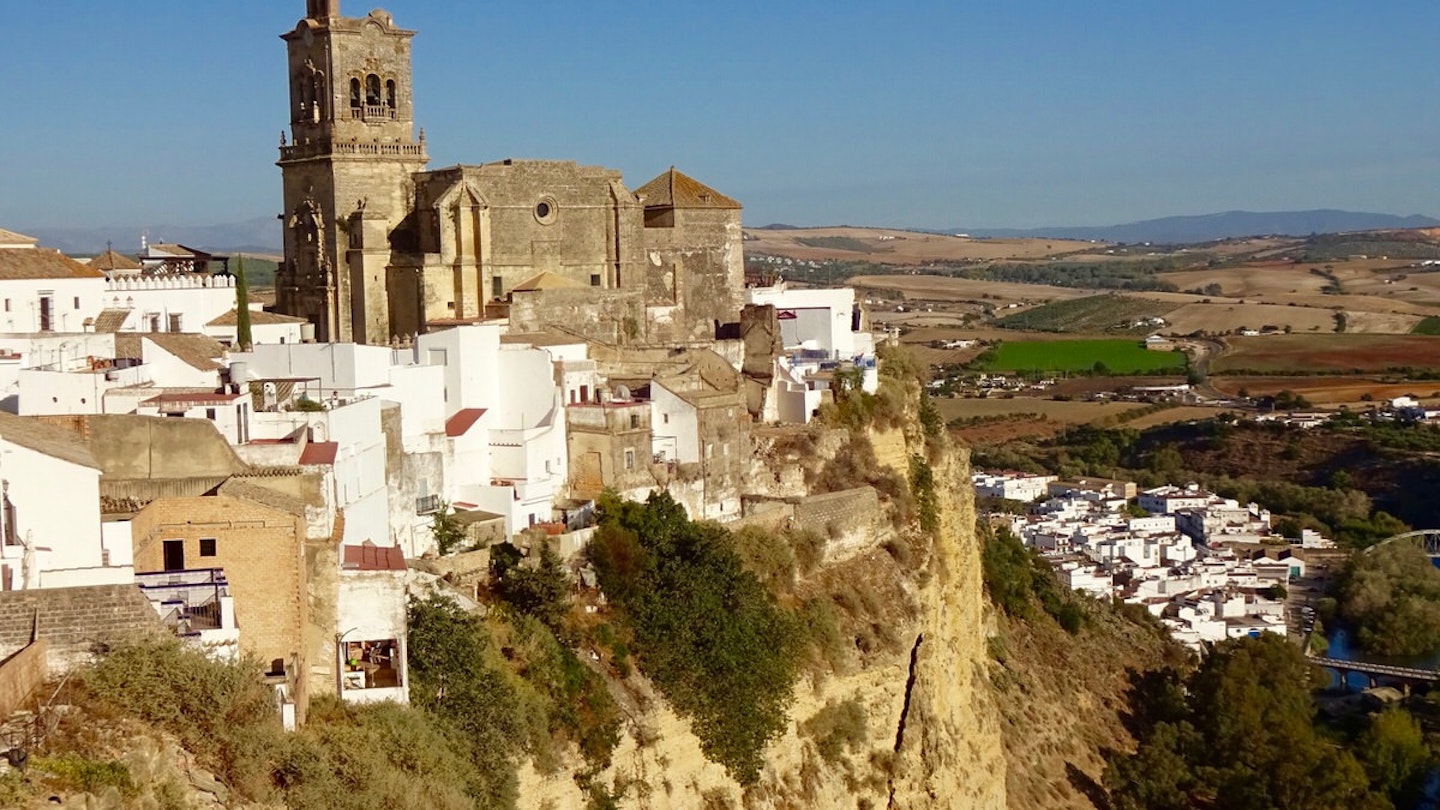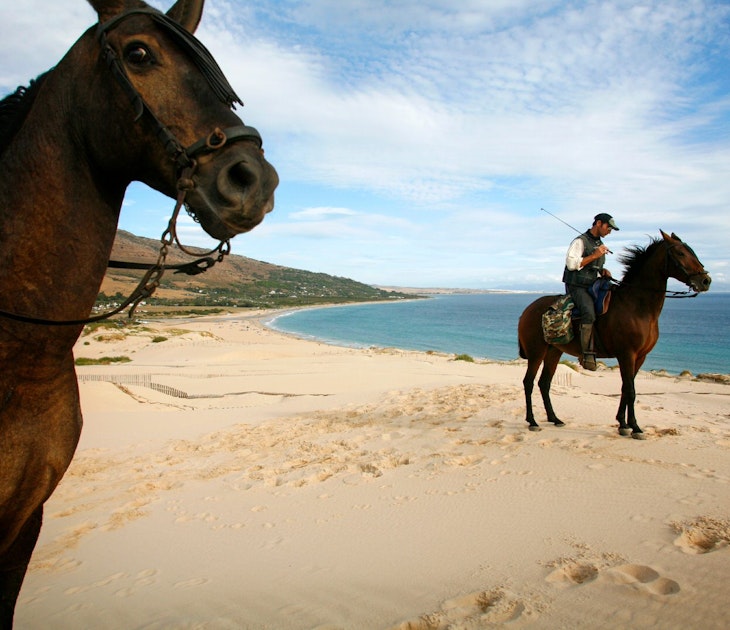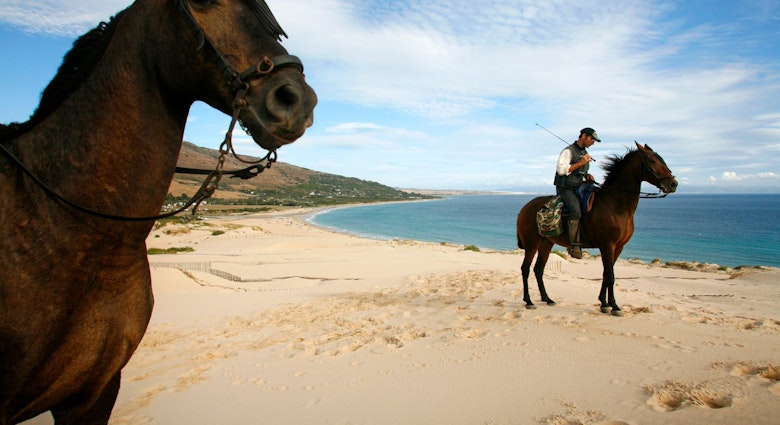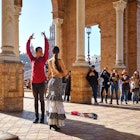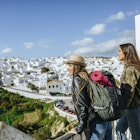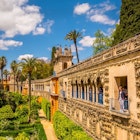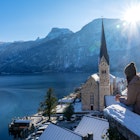Centuries-old castles, rust-red-roofed homes, white-walled alleys, soul-stirring strategic cliff-top sites and an enthrallingly volatile history: Cádiz’ pueblos blancos (white towns) are a joy to unravel. The finest can be perfectly strung together on a multi-day drive.
Andalucía bursts with beautifully blanched villages – originally (unromantically) whitewashed in the 19th century to deflect the sun and disinfect. But it’s those in Cádiz province, particularly in the northeast, that have awarded themselves the official title of ‘white towns’. For two centuries between the Christian conquests of Seville in 1248 and of the final Muslim emirate, Granada, in 1492, these fortified towns straddled the ever-changing Christian–Moorish frontier.
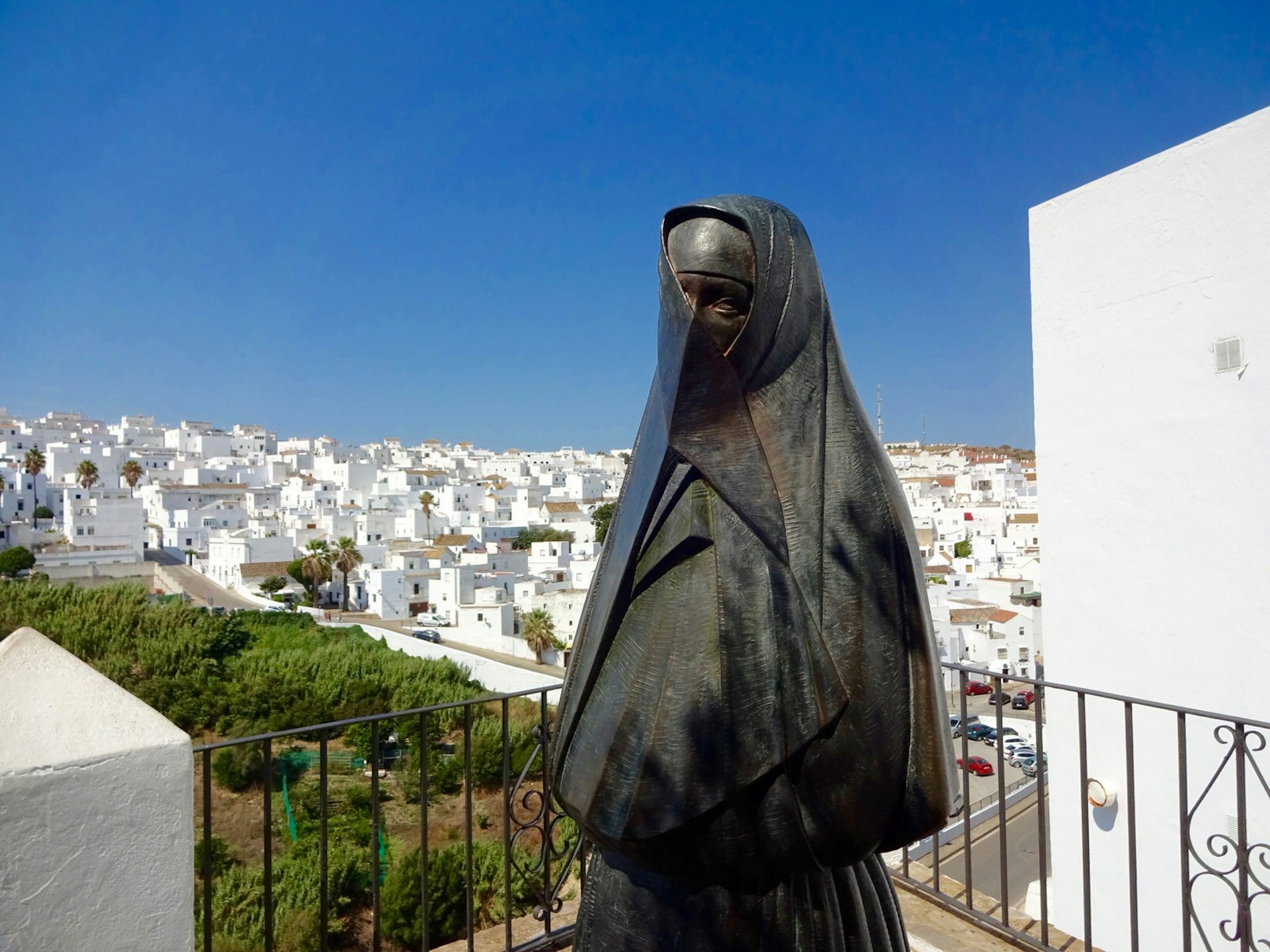
Vejer de la Frontera
There’s magic in the air in gorgeous Vejer, perched in windswept whiteness atop a rocky crag 50km southeast of Cádiz. Like its fellow de la frontera (‘on the frontier’) towns, Vejer hums with historical intrigue and a tangible Moorish influence. Original stone gateways and 15th-century defensive walls pop up around the tangled old town, watched over by the restored 10th- or 11th-century Moorish castle and the Iglesia del Divino Salvador, an architectural marriage of 14th-century Mudéjar and 16th-century Gothic.
Just off palm-dotted Plaza de España is the 18th-century Casa del Mayorazgo with its flower-filled patios and ancient watchtower. A short drive away at Los Caños de Meca, El Palmar and Zahara de los Atunes lie the broad, sandy blonde beaches of Cádiz’ wind-lashed Costa de la Luz.
But Vejer is also an understated foodie hotspot and boutique-hotel haven of Andalucía. Drop by the smartly reimagined Mercado de Abastos for sherry and tapas, both classic and creative; savour expertly executed Moroccan-Andalucian cuisine at labyrinthine El Jardín del Califa; and try local ingredients in inventive seasonal concoctions at Corredera 55. You can hone your culinary skills with food tours and cooking classes courtesy of Annie B’s Spanish Kitchen.
Where to sleep
La Casa del Califa Exquisite Morocco-inspired boutique hotel with an outstanding restaurant.
V… Sleek design meets antique furnishings at this boutique beauty with rooftop hot tub.

Arcos de la Frontera
If you had to pick just one destination to fulfil your white-town dreams, it would probably be Arcos de la Frontera. Strewn across a sheer-sided crag, 75km north of Vejer, much-admired Arcos tells a turbulent story that saw it go from independent 11th-century Berber-ruled taifa (small kingdom) to Christian stronghold.
Wander the old town’s web of slim, evocative streets and call in at Plaza del Cabildo. Here are Arcos’ luxurious parador (top-end state-owned hotel), 11th-century Moorish castle (now closed to visitors) and vertiginous mirador (lookout) overlooking the Río Guadalete. Pop into splendid Gothic-baroque churches such as the Basílica Menor de Santa María de la Asunción, then retreat into the lively world of Arcos’ classically Andalucian tapas bars. Taberna Jóvenes Flamencos rustles up traditional favourites with contemporary flair amid glowing flamenco–bullfighting decor.
Where to sleep
La Casa Grande Rambling 18th-century cliff-side mansion with seven modern-rustic rooms and a glorious rooftop terrace.
Casa Campana Two charming rooms and a five-person apartment in a 600-year-old British-owned guesthouse.
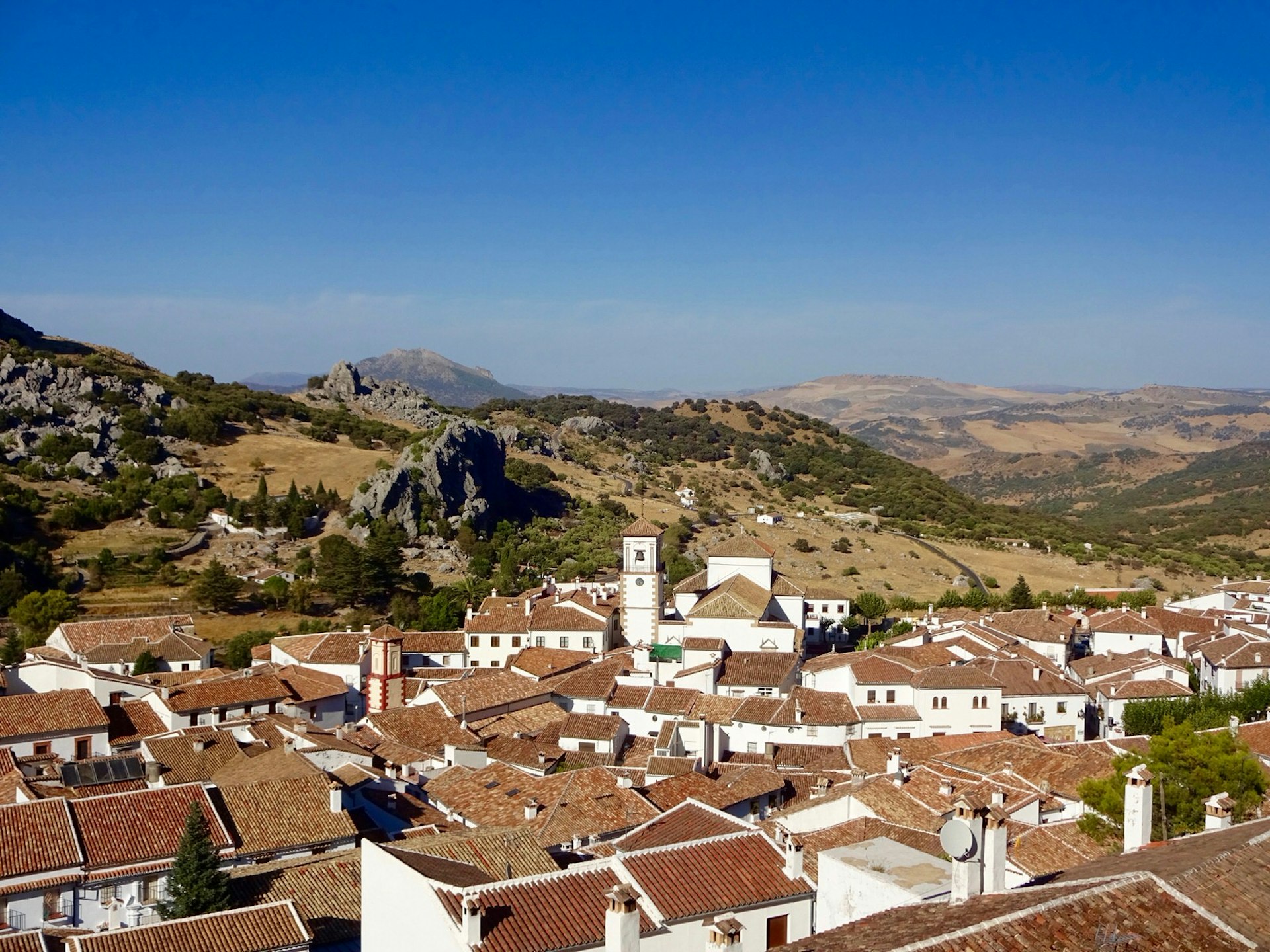
Grazalema
Clinging to the rugged green slopes of the Parque Natural Sierra de Grazalema, 50km east of Arcos, little Grazalema adds mountain flavour to its own white-village charm. Hiking paths ramble off in every direction, making this the park’s most popular base. Climb 500m to the ruined 18th-century El Calvario chapel; hike the 12km, six-hour (one-way) El Pinsapar trail past rare dark-green pinsapos (Spanish firs); or conquer the province’s highest peak, El Torreón (1648m; 3km or 2½ hours each way). The best months to hit the trails are May, June, September and October. Adventure lovers should link up with Horizon for kayaking, canyoning, caving, climbing, guided hiking, vie ferrate or paragliding.
Grazalema village itself is known for its honey, mountain cheeses and Visigothic fountains, as well as its wool blankets, which you can learn about at the Museo de Artesanía Textil. Restaurante El Torreón does wonderfully traditional mountain cooking, featuring local cheeses, chorizo and tagarninas (thistles), while La Maroma puts a contemporary spin on Grazalema tapas.
Where to sleep
Casa de las Piedras Homey, excellent-value lodgings offering detailed hiking information.
La Mejorana Tastefully styled nine-room village house with plenty of colour and a pool.
Zahara de la Sierra
About 17km north of Grazalema, over the spine-tingling 1357m Puerto de las Palomas pass, Zahara is wrapped around a lofty crag overlooking a twinkling turquoise reservoir. This is one of Cádiz’ most perfectly formed white villages, its streets overflowing with fuchsia-hued bougainvillea in the shadow of the 18th-century baroque Iglesia de Santa María de Mesa. High above looms Zahara’s crumbling 12th-century castle, whose recapture by Moorish Granada in 1481 fired up the Christians to reconquer all that remained of Moorish Spain.
One of the most exhilarating walks in the entire Sierra de Grazalema – into the precipitous Garganta Verde – begins 3.5km south of Zahara. You’ll clamber down a 100m-deep green gorge (2.5km, one hour) accompanied only by huge griffon vultures whooshing by in a close-up blur. Back in Zahara, refuel with Ronda wines and imaginative Andalucian cooking at Al Lago.
Where to sleep
Al Lago Attached to a terrific restaurant, Al Lago’s six rooms bring a dash of boutique-hotel sparkle to Zahara.

Olvera
Olvera juts out dramatically above neat rows of olive trees on the northern fringe of the Parque Natural Sierra de Grazalema, 27km northeast of Zahara. A tad earthier than other pueblos blancos, it was once a bandit hideout. Dive into Olvera’s past with the sky-reaching 12th-century Castillo Árabe, 1840s neoclassical church, 17th-century Santuario de los Remedios and intriguing frontier-history museum.
Most people, however, come to Olvera for the famed 36km Vía Verde de la Sierra – a favourite among 23 disused Andalucian railways transformed into flat(ish) cycling/hiking paths. The route whizzes west along viaducts and tunnels to Puerto Serrano. Hire bikes (€12 per day) at Hotel Estación Vía Verde de la Sierra just outside Olvera.
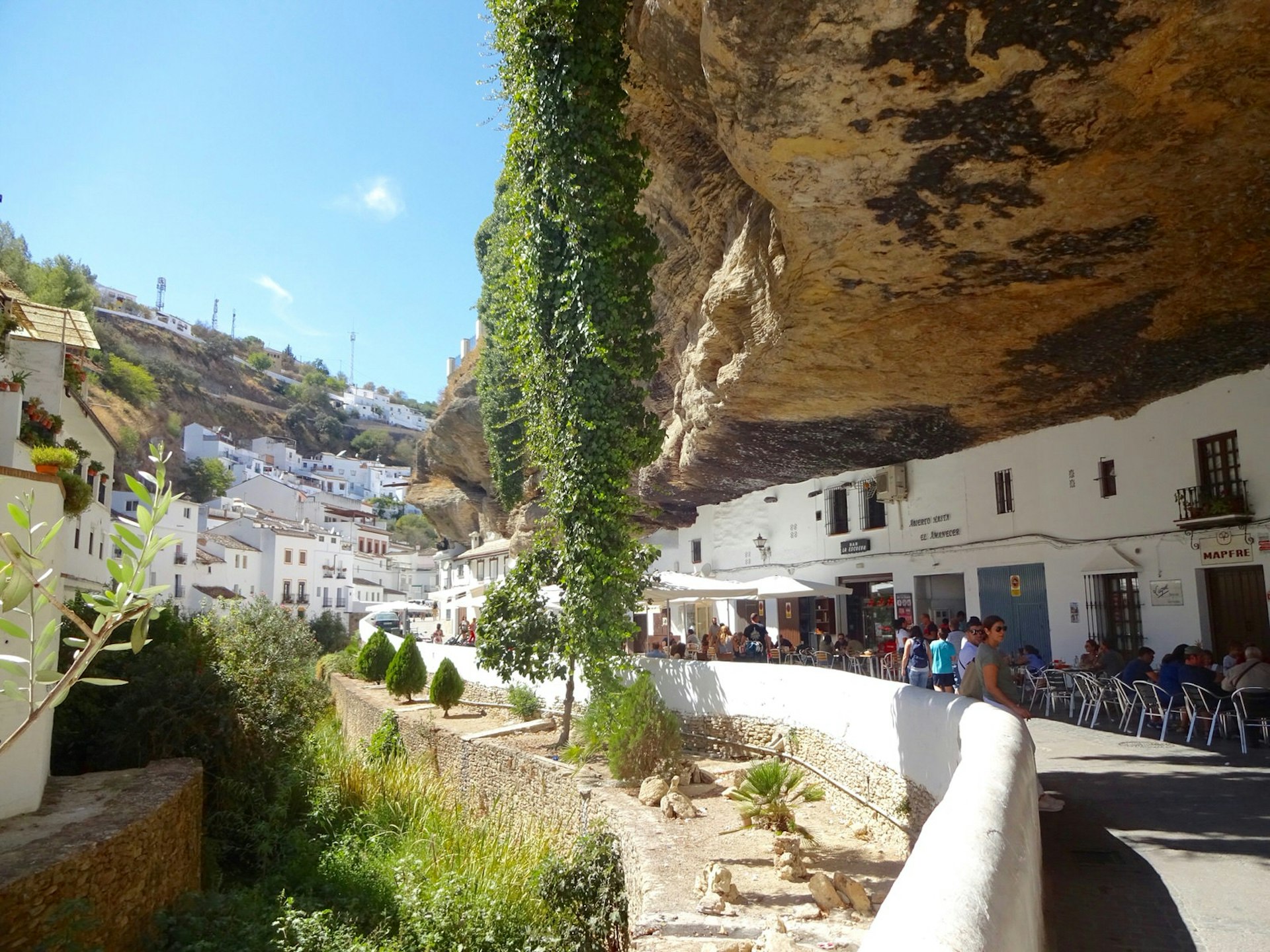
Setenil de las Bodegas
Just when you thought you had the pueblos blancos sussed out, along comes sleepy (though increasingly popular) Setenil de las Bodegas, 14km southeast of Olvera. No cliff-top defences here: people delved deep into caves for protection instead. The idea worked so brilliantly that it took a 15-day siege for the Christians to recapture Setenil from the Moors in 1484. The 12th-century castle still stands, as do plenty of original cave-houses. Some have been reincarnated as vibrant bars and restaurants, particularly along Plaza de Andalucía along with Calles Cuevas del Sol and Cuevas de la Sombra.
https://shop.lonelyplanet.com/products/andalucia-travel-guide-8

